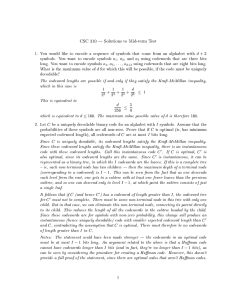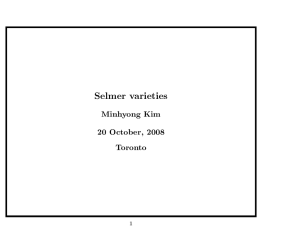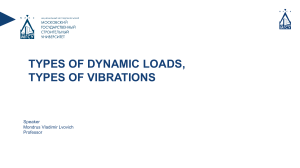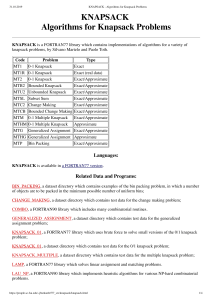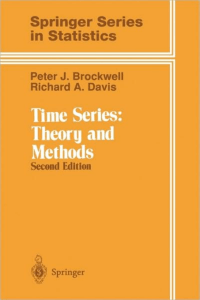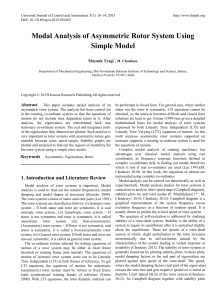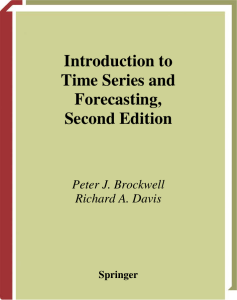ыв ь е ьжстсп × п сж ь я ш с × рсь Ґ а p(wi+1|y) > p(w й ф п хжс
реклама
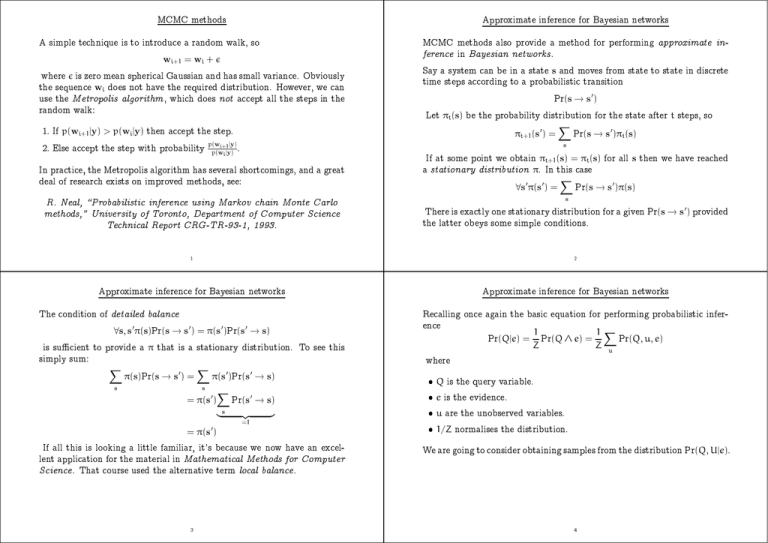
MCMC methods
Approximate inferene for Bayesian networks
A simple tehnique is to introdue a random walk, so
MCMC methods also provide a method for performing approximate inferene in Bayesian networks .
wi+1 = wi + ǫ
where ǫ is zero mean spherial Gaussian and has small variane. Obviously
the sequene wi does not have the required distribution. However, we an
use the Metropolis algorithm , whih does not aept all the steps in the
random walk:
Say a system an be in a state s and moves from state to state in disrete
time steps aording to a probabilisti transition
Pr(s → s ′)
Let πt(s) be the probability distribution for the state after t steps, so
1. If p(wi+1|y) > p(wi|y) then aept the step.
2. Else aept the step with probability
p(wi+1 |y)
p(wi |y)
πt+1(s ′) =
X
Pr(s → s ′)πt(s)
s
.
In pratie, the Metropolis algorithm has several shortomings, and a great
deal of researh exists on improved methods, see:
If at some point we obtain πt+1(s) = πt(s) for all s then we have reahed
a stationary distribution π. In this ase
∀s ′π(s ′) =
X
Pr(s → s ′)π(s)
s
R. Neal, \Probabilisti inferene using Markov hain Monte Carlo
methods," University of Toronto, Department of Computer Siene
Tehnial Report CRG-TR-93-1, 1993.
There is exatly one stationary distribution for a given Pr(s → s ′) provided
the latter obeys some simple onditions.
1
2
Approximate inferene for Bayesian networks
Approximate inferene for Bayesian networks
The ondition of detailed balane
∀s, s ′π(s)Pr(s → s ′) = π(s ′)Pr(s ′ → s)
is suÆient to provide a π that is a stationary distribution. To see this
simply sum:
X
π(s)Pr(s → s ′) =
X
π(s ′)Pr(s ′ → s)
s
s
= π(s ′)
X
|s
= π(s ′)
Pr(s ′ → s)
{z
=1
}
Realling one again the basi equation for performing probabilisti inferene
1
1X
Pr(Q|e) = Pr(Q ∧ e) =
Pr(Q, u, e)
Z
Z
where
u
Q is the query variable.
e is the evidene.
u are the unobserved variables.
1/Z normalises the distribution.
If all this is looking a little familiar, it's beause we now have an exellent appliation for the material in Mathematial Methods for Computer
Siene . That ourse used the alternative term loal balane .
We are going to onsider obtaining samples from the distribution Pr(Q, U|e).
3
4
Approximate inferene for Bayesian networks
The evidene is xed. Let the state of our system be a spei set of values
for the query variable and the unobserved variables
s = (q, u1, u2, . . . , un) = (s1 , s2 , . . . , sn+1 )
and dene si to be the state vetor with si removed
si = (s1, . . . , si−1, si+1 , . . . , sn+1 )
To move from s to s ′ we replae one of its elements, say si, with a new
value si′ sampled aording to
si′ ∼ Pr(Si|si, e)
Approximate inferene for Bayesian networks
To see that Pr(Q, U|e) is the stationary distribution
π(s)Pr(s → s ′) = Pr(s|e)Pr(si′|si, e)
= Pr(si, si|e)Pr(si′|si, e)
= Pr(si|si, e)Pr(si|e)Pr(si′|si, e)
= Pr(si|si, e)Pr(si′, si|e)
= Pr(s ′ → s)π(s ′)
As a further simpliation, sampling from Pr(Si|si, e) is equivalent to sampling Si onditional on its parents, hildren and hildren's parents.
This has detailed balane, and has Pr(Q, U|e) as its stationary distribution.
5
6
Approximate inferene for Bayesian networks
Approximate inferene for Bayesian networks
So :
We suessively sample the query variable and the unobserved variables,
onditional on their parents, hildren and hildren's parents.
This gives us a sequene s1, s2, . . . whih has been sampled aording to
Pr(Q, U|e).
Finally, note that as
Pr(Q|e) =
X
E[f(Q)] =
Pr(Q, u|e)
we an just ignore the values obtained for the unobserved variables. This
gives us q1, q2, . . . with
qi ∼ Pr(Q|e)
X
f(q)Pr(q|e)
q
=
X
f(q)
q
=
u
7
To see that the nal step works, onsider what happens when we estimate
the expeted value of some funtion of Q.
XX
q
X
Pr(q, u|e)
u
f(q)Pr(q, u|e)
u
so sampling using Pr(q, u|e) and ignoring the values for u obtained works
exatly as required.
8


